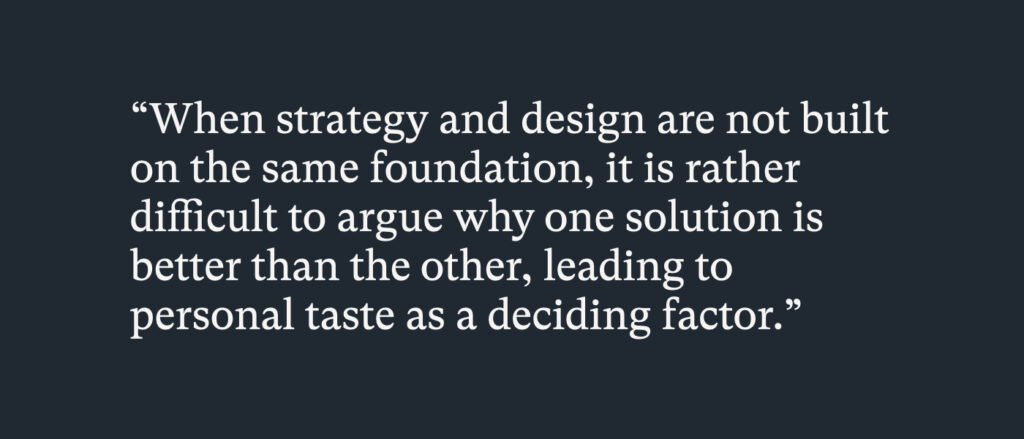We usually say that a change in design is the strongest marker of change. Because how can anybody understand that things have changed if everything looks the same?
Since 2004, we have created new visual identities for numerous international brands, organisations and companies. And for quite a few, a new logo or a completely new visual identity is the most visible legacy that you, as a CEO, Chairman or the like, leaves behind when you move on to the next challenge. However, we sometimes stumble upon an organisational challenge, resulting in crucial decisions being based on the individual’s taste— a rather dangerous path, in our humble opinion. And this is where we cannot help reminding people, that there are things greater than oneself. Companies, brands, organisations and their purposes are in most cases greater than the keeper, and they will last for longer making changes in the visual expression a rather serious and important matter.
Whether you represent a brand, an organisation or a company, all critical decisions should be made with the overall business target in mind. And in our opinion, preferably in the tension field between your business target and your purpose. That is, to use an old phrase, “where the magic happens” if you ask us. We occasionally find ourselves in a situation where purpose, strategy and finally, the design are not aligned. Design must support both strategy and purpose in order to be unique, authentic and relevant. When strategy and design are not built on the same foundation, it is rather difficult to argue why one solution is better than the other, leading to personal taste as a deciding factor.

Most of us already know that a rebranding or redesign process is costly. In fact, a study based on 2,000+ rebrand projects revealed that approximately 20 euros are spent on implementation for every euro invested in strategy and design, making it even more critical that the company, brand or organisations ends up with the right design solution – not just the pretty one. But how do we figure out whether or not the design follows the agreed rules of the game? Well, one way of creating a common point of departure is to start with the identity work.
We believe that your identity is the only truly sustainable competitive advantage – everything else can be bought or copied. And the beauty of this approach is that identity is both universal and unique, making identity a great way to discover the true and unique DNA of a company, brand or organisation while being simple enough as a tool for most people to be able to use the identity-work in their everyday decision-making. Also, when it comes to crucial strategic decisions, as redesigning the logo, creating a new visual identity and the like. For with the identity work in place, taste doesn’t matter anymore. It soon becomes clear whether a decision is the right one or not. Does this specific choice actually help the brand, company, or organisation achieve the overall target and purpose? And that is what matters – don’t you agree? So please help us get rid of personal taste as a deciding factor in critical business decisions and start to ask for solid arguments of how a specific solution will help your brand, organisation, or company achieve its goals.
Contact
Related insights
Identity first: The key to lasting strategic impact
Many of us have heard the numbers… 60-70% of all strategies fail. And if we go all the way back…
Aligning the organisation for transformation and growth
After a busy time with exciting projects, we had the opportunity to reflect on one of our customers’ pervasive challenges.…
Crafting company names with an Identity-driven approach
In the dynamic realm of business, a company name is more than a mere identifier – it’s a powerful vessel…
In the pursuit of talent – how identity can help shape and strengthen your employer brand
Research shows that most leaders are facing severe challenges onboarding the right competencies to the company. In addition, many encounter…

